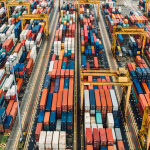How the US-China Trade War will impact SMEs

The controversial trade moves made by president Trump paired with the backlash that came as a response from China are no minor blips on the global economy’s radar. Although their own economies and the businesses that actively participate in the import and export of goods and services are the ones suffering the most, shifting the tide towards other countries bidding in their place, the world is far from immune to the impact of this trade war. The short-term effects may seem favorable, but what can we expect to occur in several years’ time?
In the heat of the row between the world’s largest exporter and one of the world’s most prominent economies, the two economic titans and the rest of the world can slowly feel the consequences spreading. What may have begun as a trade conflict between the two nations of China and the US has caused a ripple effect that will change how other economies develop and evolve, as well as how certain SMEs can continue with their operations.
The rising role of minor players
Looking beyond China and the US for a moment, we spot several different nations that stand to benefit, at least temporarily, from this trade war in numerous ways. For starters, the nations that already present a competitive balance to both countries in terms of import and export will finally get a fair chance to fill a more prominent role in the process. Now that more Chinese businesses are unwilling to take US goods due to the increasing tariffs imposed by president Trump and the changing treaties, smaller countries, and consequently, their mid-sized suppliers will stand to benefit from this shift.
Without the goods coming in from China to the US, Mexico is starting to feel its ever-growing role as an alternative supplier of tech equipment, including data processing devices, fiber optic cables, and the like. The vicinity of Mexico allows them to provide a competitive price that has allowed the US to drop their China imports by several billion dollars – and that is as tangible a change as it can possibly get. Canada is another partner to step in both for China and the US, providing electronic goods to the US, and soybeans to China.
Australia’s current competitive advantage
The trade conflict that set the Northern Hemisphere ablaze has also shed some light on the economy of the Southern Hemisphere’s main player – Australia. In recent months, China is turning to the Land of Down Under for many of its most prominent import needs, including that of meat, wine, as well as wheat. Businesses in these industries continue to turn to reputable portals the likes of Week in China to monitor the escalation of the US-China trade war and recognize opportunities for growth in their own markets.
It takes a keen eye to spot relevant market shifts despite the ongoing development of certain industry giants. A single glance at Costco’s launch in Shanghai, and you understand that even the most resilient and beloved of American brands can fall pray to this trade war. This time, the proof is not in the pudding, but in the fresh produce section – close to half of Costco’s offer is replaced by food coming from Australia due to the newly-imposed tariffs. As things stand, Australia is slowly becoming to China what Mexico is to the US, a trade ally in a time of need.
The rocky road to the future
This trade war is anything but subtle. In the spotlight of the global media, it has become apparent to what lengths the president of the US is willing to go to change the role of China in their own economy, and consequently, that of the world as well. Despite the fact that the two countries are in this conflict alone, no country can be isolated from it in any way. Even the most neutral of all countries, Switzerland, is currently exporting gold worth in billions to China, and its exports to the US have also experienced a minor, but noticeable growth.
Although many countries are doing their best to use this temporary change in the trade pace, there’s a need for a level playing field in terms of competition, and a need for balance in supply and demand for the sake of economic stability on a global scale. It’s still uncertain as to how the trade war will ultimately pan out for all those on the sidelines and the parties involved, but it’s highly likely that there will be more turbulence on the horizon before we can restore that balance yet again.
Keith Coppersmith is an Adelaide based business consultant with a degree in Media Management. With experience in numerous small businesses and startups, he enjoys giving advice on all things marketing.








